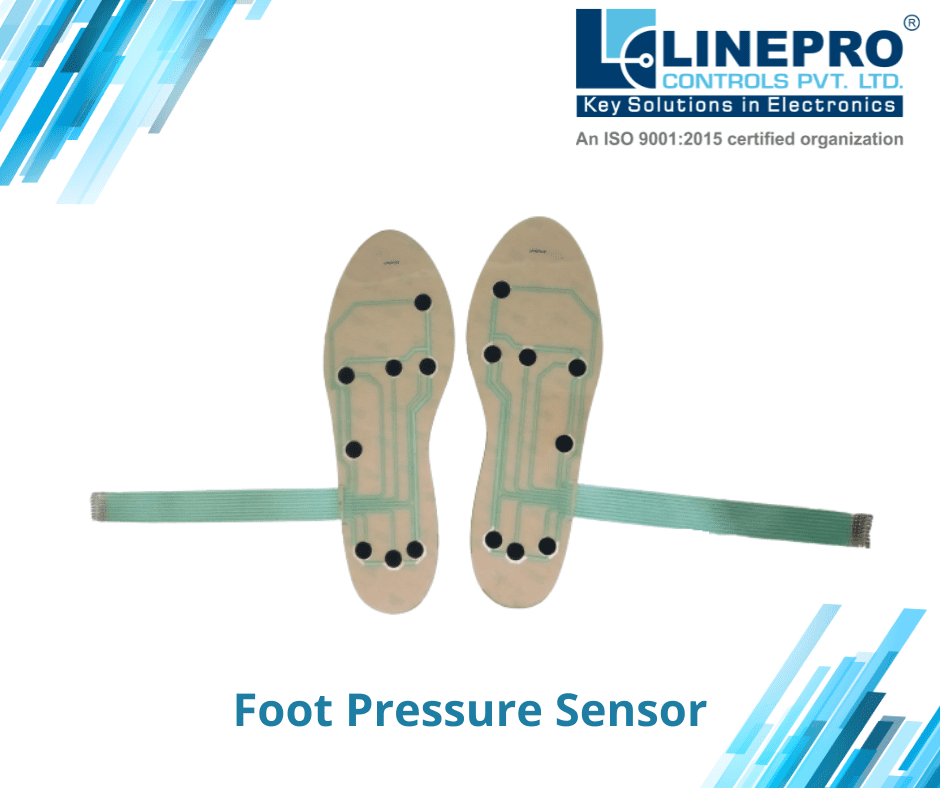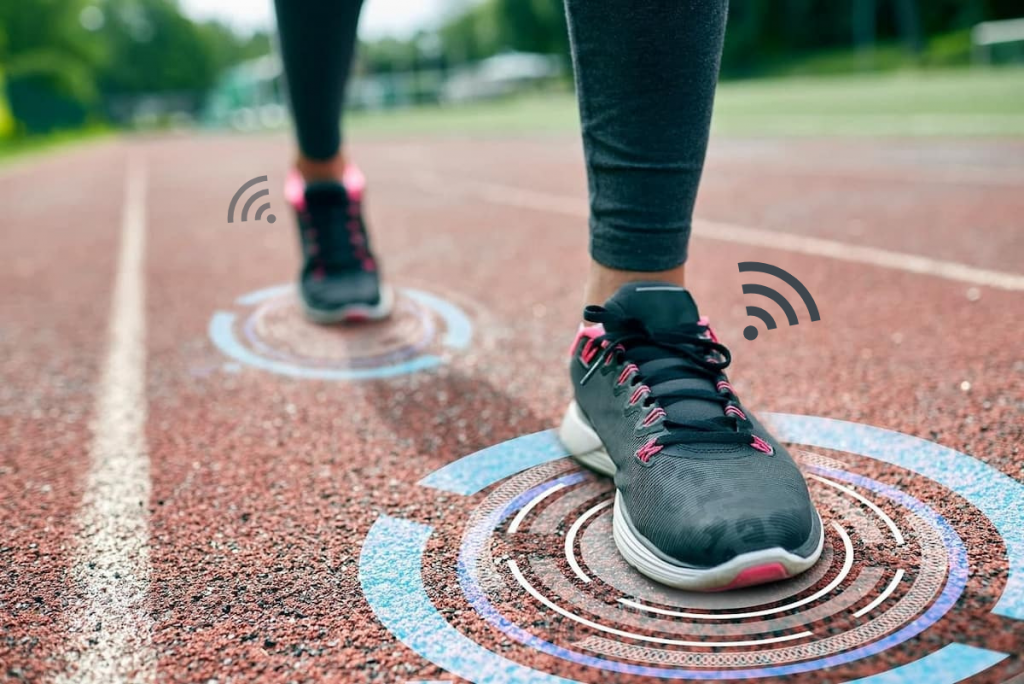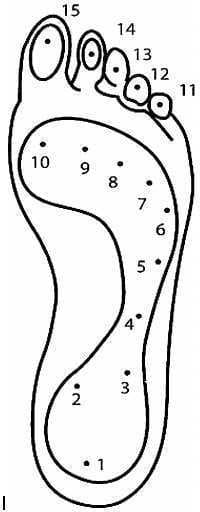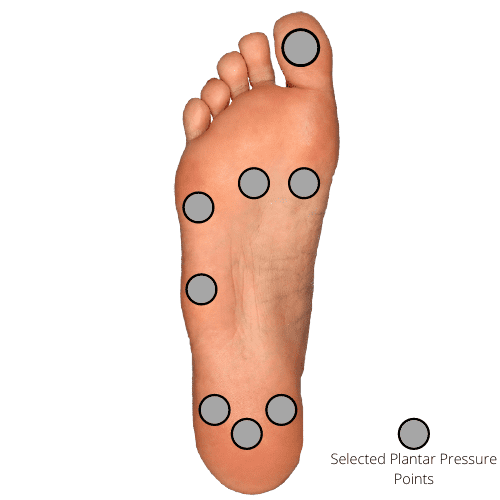Analyzing the distribution of pressure on the plantar foot is a key aspect that is being considered in the area of healthcare and as well as in the sports world. Physical rehabilitation for the lower body has a connection with the sports world. To prevent long-term harm to the affected area and speed up the healing process in the affected part, it is essential to watch the patient’s rehabilitation programs at the hospital and the home. Multiple Techniques have been created for the analysis of gait patterns, but they are not quantitative. The best option to measure and analyze the foot pressure patterns remotely is by using a Foot Pressure sensor. This system is incorporated inside the shoes of the patient, commonly known as an in-sole sensor. In contrast, this system fails because it measures static or dynamic processes for an extremely short space and time.

In the foot pressure sensor system, an electronic insole is created inside the shoe using the Force Sensing Resistor (FSR), a Printed Electronics Technology that monitors pressure wirelessly. Eight FSR sensors are placed in the foot, one at the toe region, three at the metatarsal region, one at the midfoot, and three at the heel region. The plantar pressure is used to analyze and study the distribution of pressure. Microcontrollers process the signal generated by the Foot Pressure Sensor and then send it to mobile via Bluetooth module. With the help of Internet-of-Things (IoT), when the signal goes beyond the limit, a notification will be sent to the patient consulting the doctors/physiotherapist to ensure that action is immediately implemented further. The proposal system will help the doctors/physiotherapist and people keep track of their health with these smart foot sensor shoes. This device acts as a tool for both the patient and the doctor to assess and treat the condition.
Why world needs Foot Pressure Sensor driven Smart In-sole shoes?
Enhancing the performance of health management and medical management is the most sought-after area in today’s era. The necessity of providing healthcare services at lower medical expenses and the availability of nursing personnel is the main problem. A recent development, usually in Internet-of-things (IoT) technologies, is enhancing and improving the quality of healthcare and the biomedical field. This method is used to study the foot pressure patterns using foot pressure sensors and accordingly plan how to care for people with disabilities hindering their ability to walk. It is used to control their ability to walk and guide them on walking patterns after any orthopedic surgical procedure in rehabilitation. The difference between healthy and deformed post-pathological gait patterns is invisible by the untrained eyes.
As per a survey by the National Institute of Ageing, it is observed that the number is believed to increase by a third to 1.5 billion before 2050, that is, 16 percent of the globe’s population. The aging population causes problems with health, such as injuries or conditions that can cause knee pain and dislocated shoulders. Such cases are suddenly on a steep rise. Therefore, after surgery, rehabilitation with new methods and strategies has turned into the most important thing. The process of improvement and rehabilitation can be crucial in assisting the subject in recuperating their extremities and recapitulating their sloppy way of living.
How do In-sole Pressure sensors help in systematic and effective Rehabilitation?
Rehab provides relief from the suffering of swelling and pain to restore normal motion in the joint. It also helps to increase strength in the joints and muscles around it. Besides these benefits, it helps in proper blood circulation, specifically immediately following surgery, which means that blood clots can be prevented to avoid enduring that could be caused to the person injured with heel spur. Thus, it is important to keep a close eye on the patient in clinics and at home.

Technology is growing, and there are technological advancements in biomedical instruments. The latest instruments have been developed, designed, tested, and manufactured to monitor rehabilitation actions following surgical procedures. Before the advent of technology, progressing the correct way to an exercise depended on manual methods and visual analysis. There are many methods and instruments used for gait monitoring, which is important for rehabilitation purposes. Walking aids are among the most popular aids used in rehabilitation.
If the pattern of walking aids is to be considered, it provides information based on the quantitative aspect of gait analysis. The data can be useful as orthopedic information to properly guide the patient on how to use it properly at the early stage of recovery.
The conventional method for rehabilitation is through visual analysis and manual methods. This method emphasizes exercises based on visual understandings by the consulting practitioner. This method has disadvantages- Human errors, such as how we perceive the load on the patient’s lower limbs, the motion, drag, synchronism, etc.
So there is a need for developing an in-sole shoe that provides quantitative information for gait analysis and provides feedback to the patient to ensure proper recovery of health. In-sole foot pressure sensors consider plantar pressure distribution. Plantar load is the stress that is located in the middle of the extremities and surface. In the realm of biomedical and sports, “balancing” is a keyword.
What characteristics the Foot Pressure Sensor carry?
This aspect of balancing needs to be specifically considered concerning the Pressure distribution of feet. Pressure distribution varies from person to person based on their age, gender, etc. For this purpose, the patient under consideration must visit the clinic. But, it is necessary to note that, to establish quantitative records, it becomes cumbersome for the patient to visit the clinic frequently. Therefore, this concept of IoT integration is transportable, affordable, and under continuous monitor.
Pressure measurement of the foot plantar using foot pressure sensor can be done with the help of two methods, i.e., platforms and in-shoe systems. Platform Systems are usually embedded into tracks or pathways; thus, they can only be used in indoor or outdoor measurements. In-sole technology is embedded into the shoe.
The in-sole foot pressure sensor should be such that it should be flexible and should possess minimum cabling. At present, research centers and laboratories have a variety of plantar pressure measurement equipment. But, the problem with such equipment is that they are impossible to use for continuous monitoring and outdoor conditions.
The foot pressure sensor must be able to meet the following requirements:
1. Should be designed to withstand outdoor conditions
2. The pressure sensor should be of sufficient precision
3. The patient should be comfortable wearing the foot pressure sensors. The patient needs to be in a natural state of movement.
4. The sensors should be compatible with wireless technology for data to transmit to the healthcare consultant for analysis.
Concerning these four characteristics, this in-sole foot pressure sensor consists of a data acquisition device designed to be small in dimensions with a reliable electrical power source. Bluetooth is employed to support wireless configuration to allow this system to be used for clinics, research labs, and everyday indoor/outdoor activities. In addition, real-time monitoring and displays of the plantar pressure distribution are performed.
It is explained in the following manner. The overall structure of the system is described in Section II. Section III provides a brief overview of sensor selection and location selection. Section IV concludes with an observation. The future scope of work and the work to be accomplished is explained in section V.
IoT integrated Foot Pressure Sensing System Structure

Pressure Sensor: To monitor the pressure of the feet, the foot pressure sensor is used. Within the design system, the FSR sensor is mounted below the heel, medial, lateral, and anterior of the foot. The increase, as well as the diminution of pressure, will be tracked. The patient’s physical posture is taken into consideration when under observation.
Signal Conditioning: Pressure sensors work on the concept of change in resistance. We must convert the change in resistance to voltage. Its output from the sensor isn’t sufficient to drive the microcontroller’s port. Its output needs to be calibrated to meet the function.
Microcontroller: The output from the signal conditioning unit is sent as an input to the microcontroller. It will gather the data from the foot pressure sensors and process it appropriately.
Bluetooth Module: It’s a part of the system that communicates. The main reason to use Bluetooth is that it is one of the most advanced communication systems for small distances. By using Bluetooth communication, we will be able to transmit information to the receiver device, which serves as an application portal on the user’s mobile.
Mobile Unit: We’ll create an app that is specifically designed for this device. The app will be able to receive information via the controller. It will report the condition of the foot by analyzing dynamic and static data.
API Client and Server: API is an Application Programming Interface. The API’s purpose is to safeguard the information to protect it from an unauthorized person. If any data is available on Mobile via an API server, it is transmitted to the computer for further analysis by the physiotherapist. This assists the patient as well as the physical therapists in understanding the patient better.
How does the Pressure Sensing System works?
The system functions in a straightforward and efficient method. The initial component of the system is the foot pressure sensor using FSR. It is the physical block that comes into contact with the individual. Foot Pressure sensors detect the pressure. The resistance of the sensor varies inversely by pressure as the point of observation increases. A sensor’s resistive output is not able to drive the controller. This is why we have signal conditioning circuits to facilitate converting the change in resistivity into voltage. After the conversion has taken place, it’s simple for controllers to get the information. The sensors are joined to the controller using signal conditioning units. The controller can read the sensor and save its value within the system. It then checks each sensor connected one at a time and then creates an array. This array needs to be transmitted to the Android application via Bluetooth. Android application will receive the information. If a person is engaged in incorrect exercises or performs incorrect steps, an alarm is immediately sent to the mobile, and data will be forwarded directly to the healthcare consultant.
Force Sensing Resistor as Pressure Sensor for In-sole Pressure measurement
There are a variety of sensors available for plantar pressure measurement, such as (i) the piezoelectric sensor for measuring pressure, (ii) capacitive sensitive, (iii) piezoresistive. The sensors with piezoresistive technology are less sensitive to noise. In addition, when compared to other sensors, these sensors are less expensive. FSR is a force sensing resistor whose resistance alters as pressure is applied.

The sensor is made up of two membranes separated by a small air gap. Each membrane comprises inter-digit FSRs that are electrically separated from one another; each set connects to a track via the tail. The opposite side of the membrane has been coated in FSR carbon-based ink. The toughness between the membranes and the gaps around the edges is maintained through the air gap. This result in resistance is in inverse proportion to the force applied.
Force Sensing Resistor Locations on the Foot Sensing Resistor Sole to grab the desired pressure measurements
The pressure of the plantar area is what we call the pressure measurement placement within the foot of plantar points that are desired. This section involves two choices: one is to choose the sensor, and the second is to determine the sensors’ position. The pressure points on foot are divided into fifteen areas, as depicted in the figure. 3. To simplify the system, the pressure of eight points is taken into consideration. The following image illustrates the eight locations of plantar pressure in fig.4.


Sensor Characterization
The characterization of sensors can be performed using two methods: the universal test machine (UTM) and the dead weight pressure gauge. The first experiment is conducted with a UTM. A force was applied to the sensor, and the graph was monitored on the computer. As a result, it was found that as pressure increases, resistance diminishes linearly. According to the equation
Force = Pressure/Area
If we are aware of the force and the size of the area, the force exerted by each foot point can be identified. These quantitative parameters are useful to orthopedics to analyze gait. The graph of force versus resistance was calculated and is illustrated in the figure. 6.

Figure 4 -Universal Testing Machine
| Sr. No | Force(Newton) | Resistance(Kilo-ohm) |
| 1 | 75 | 10.3 |
| 2 | 165 | 4.7 |
| 3 | 325 | 3.6 |
| 4 | 560 | 2.8 |
| 5 | 770 | 2.5 |
| 6 | 1600 | 1.9 |
| 7 | 2010 | 1.3 |
| 8 | 2300 | 0.8 |


Figure 7- Dead Weight Pressure Gauge
| Sr. No. | Weights(Kg) | Resistance(Kilo-ohm) |
| 1 | 5.7 | 13.26 |
| 2 | 8.5 | 11.52 |
| 3 | 11.3 | 10.8 |
| 4 | 14.1 | 8.6 |
| 5 | 16.9 | 6 |
| 6 | 19.7 | 5.5 |
| 7 | 22.5 | 4.5 |
| 8 | 25.3 | 4.03 |

The second experiment was conducted using the dead weight pressure gauge. The experimental setup of the dead-weight pressure gauge is illustrated in the figure. 7. From both graphs (fig. 6, fig. 8,) we can conclude that resistance decreases when the weight or force increases. In the case of the FSR sensor to create the new system appears more durable.
However, it is not suitable for use due to its lack of linearity, reliability, and repeatability response. The next step was to use the Linepro Foot Pressure Sensor. The working principle of Linepro’s foot pressure sensor is similar to that of the FSR sensor.
Based on the results of experiments conducted using the FSR sensor and the Linepro’s Foot pressure sensor, we conclude that Linepro’s sensor has more of a linear and repeatable characteristic and is more reliable than FSR, which can be seen in the graph (fig. 9).
CONCLUSION
In this method, the insole shoe helps determine variation in pressure for patients suffering from various ailments like fractures, foot anomalies, etc. This measurement of plantar pressure can determine whether the patient is suffering from foot problems or not. This could prevent the patient from developing the disease. The system’s design ensures that prevention is the goal of Linepro’s Foot Pressure Sensing system. The results show that this device is safe and can measure the foot’s pressure distribution to find out if there are any anomalies. The sensor’s size is extremely small and is very easy to install inside the shoe. The system has a limited cable system and is suitable for patients for daily and continuous tracking.
What do the Foot Pressure Measuring devices mean for future?
In the near future, the proposed system could be complemented by an Android application that will take the signal of the transmitter module and notify the healthcare professional if there is a change in the distribution of foot pressure. The device can also be used for patients suffering from fractures and compare results with regular foot pressure distribution.

